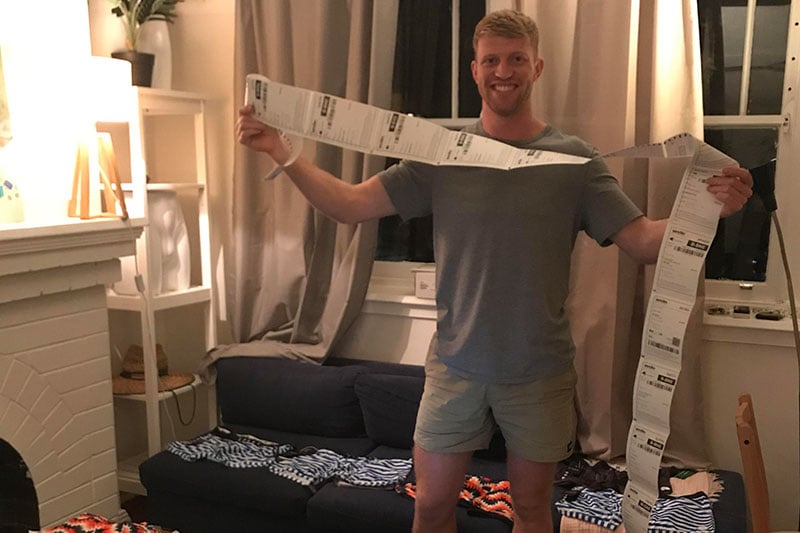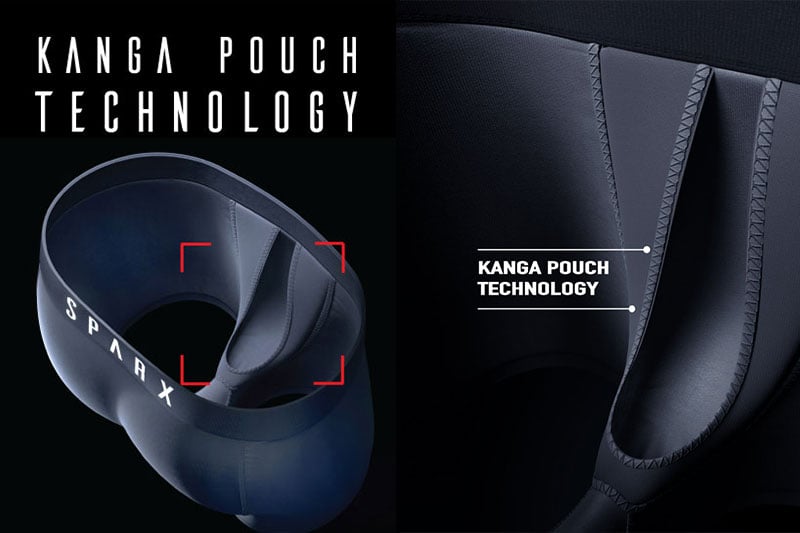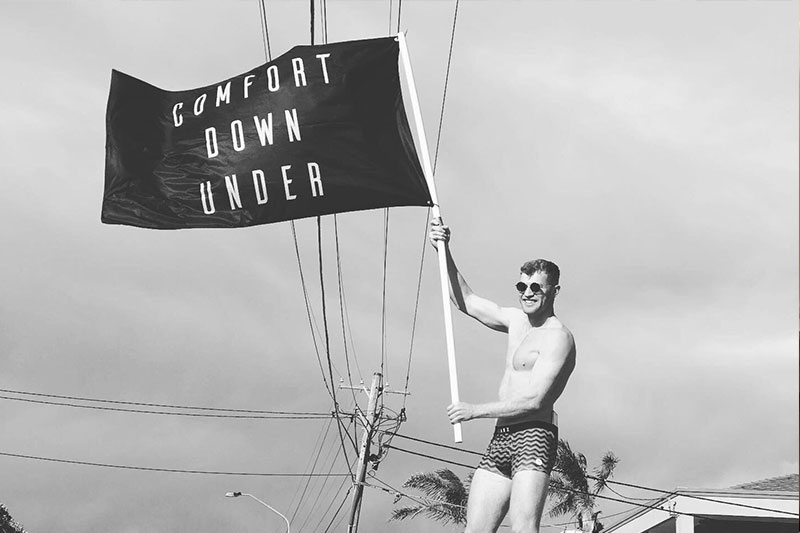Founder of SPARX Underwear, Patrick Psotka discusses his sudden business boom amid COVID-19 lockdowns and his journey – so far – to revolutionise the men’s underwear industry.
While businesses around the globe continue to fall victim to the ongoing coronavirus pandemic, Patrick Psotka’s online venture, SPARX Underwear, has beaten the odds with a remarkable surge in sales – marking just the first step in the entrepreneur’s vision to change the men’s underwear industry with his advanced ‘Kanga Pouch Technology’, a separate compartment within the underwear which essentially functions as a bra for men.
Originally from Vancouver, Canada, Patrick studied Entrepreneurship at the University of Victoria, where his final year business project led to the eventual birth of his company, SPARX Underwear. Since March 15, just three days after the WHO declared the outbreak as a pandemic, his international sales have exceeded AUD 150,000 (USD 104,814) – making it the company’s best financial quarter to date.
At just 27 years old, Patrick has set the ambitious goal of becoming one of the ‘biggest and greatest companies to come out of Australia’. Hive Life sits down with Patrick to discuss building a brand out of his Bondi apartment block and its unanticipated success during the pandemic.

What was the inspiration behind SPARX Underwear?
Growing up, my friends called me ‘Sparky’. I was the young kid in the group – I had a lot of energy and the red hair to match as well. I was always bouncing off the walls, so they just called me Sparky, you know? Like the excitement of a dog hearing “Let’s go Sparky, let’s go for a walk!” That’s how I came up with the name ‘SPARX’. It represents that same energy and is exactly what the brand stands for.
I went to school at the University of Victoria, studying Entrepreneurship. Before my last year, I took a semester off and went travelling through Southeast Asia where I was doing a lot of hikes with two Australians I had met. It was very hot and humid in Thailand and, being from Canada, I’m not used to that. So on these hikes, we had issues with chafing, even though the underwear I was wearing was supposed to be very good performance underwear. I knew that there needed to be a better design, so that’s where the inspiration came from. In the final semester of my degree, I worked with my friends on a semester-long project, developing a business plan for a men’s underwear company. We had to pitch it to the professor and it performed really well, which gave me the motivation and the belief that I could actually turn this into a successful business – and five years later, I’m still doing it.

Can you walk me through the technology behind Sparx Underwear? How do you differentiate yourselves in the market?
The main point of differentiation comes from the inside of the underwear. There’s a separate compartment – ‘the kanga pouch’ – which functions as a bra for men. The three boys go in there to keep the ‘joeys’ front and centre – not hanging to the left or to the right and keeping them away from the legs. Because of that extra space, it allows for a little more airflow which keeps things cooler. When you add all that together with breathable, moisture-working fabric, it’s just night-and-day better than anything else on the market, functioning and performing well in the heat. I believe in the product so much that I really believe that I’m going to change the men’s underwear industry.
I market the brand as more of a lifestyle product than a basic commodity. A lot of underwear ads portray men’s underwear with ripped guys in six-packs lounging in bed with a girl. I wanted SPARX to be a lifestyle brand, basing the idea off of underwear being the first thing you put on in the morning and the last thing you take off at night. It’s a reminder that life happens in between and to do one active thing a day – whether it be morning yoga or taking your dog for a walk.
What was your experience like starting the business? Any unexpected challenges?
That’s always an interesting question for me. I was 23 and had just graduated from university. I knew the idea of the product was really good, but I still hadn’t figured out the back end of the business in terms of our supply chain, product, and branding. The other side of me was like, “What else am I going to do?” I didn’t really want to get a job and go in that conventional business nine to five route. I really only had one choice and that was to make this business happen. If I wanted to be successful, then I just had to stick with it.
It was a tough drive in the first two years. I was riding delivery for UberEats at night, just to make money, pay the bills, and help fund new samples for that first production. The great thing was that it was so flexible – it allowed me to stay focused on building the product and the early stages of the business. There were definitely some dark days. I spent AUD 10,000 (USD 6983) on a production run where I thought it was going to be really good, but it turned out that the samples they sent were a lot better quality than the actual production runs, so I was left with AUD 10,000 worth of unusable product. I went through about three manufacturers before I finally found one that I really like, and still use to this day.

The business has thrived in spite of the pandemic. Did you anticipate the sudden rise in demand? How did you adapt?
At first, I was like “Oh god, COVID is gonna happen!” I was worried that sales were going to drop, but actually the complete opposite happened. I think it was because a lot of men were suddenly stuck at home spending all day in their underwear, so they wanted it to be comfortable. It was like the perfect storm of a good product mixed with a lot of eyes on the internet looking for stuff to buy. For marketing, we keyed in on that messaging and started pushing Facebook ads projecting the message of being comfortable at home. A lot of the imagery we used was of a stereotypical guy dressing up for a meeting call wearing a suit and tie on top, but underwear and slippers on the bottom – those types of ads did very well because it was so topical. People could relate to that. That got the ball rolling in terms of the surge in sales.
In what ways has your business benefited?
COVID-19 gave our brand a lot of exposure and we had a lot of first-time customers trying the product. The hardest thing about the business is getting men into that first pair – spending AUD 35 (USD 24) on a pair of underwear. People don’t know how good something is until they try, but once they get in the product, it speaks for itself. That support and separation make a difference, making that next sale so much easier. We found that about 30% of our customers reorder within the first 90 days of purchase. So the lifetime value of a customer is quite high and it just goes to show how good the product is. Men are such creatures of habit – if they like something, they just stick with it.

How will you continue to scale the business? What are the future plans for the company?
Right now the main focus is on growing and really building the base of the business in Australia. There’s a lot of value behind Australian brands so I really want to make it as ‘Australian’ as possible before I start branching out to overseas markets. My thought process when starting the business was to go into a market, build the brand, and its consumer awareness.
As the brand starts to mature, the plan is to expand the scope of the marketing. We want to start doing billboards, work with bigger influencers, and build out influencer strategy. Then it’s also about introducing new products. We’re working on a women’s line right now that complements the men’s range – made from the same fabric and same athletic inspiration. We want to roll it out for Australian summer, so we’re looking at about September-October to have that launched and ready to go.
Related Articles
SODA Shades: An Instagram Sensation
Orbitkey: Australian Design Startup Crowdfunded AUD 10,000 in 16 Hours
Medical Pantry: Australian Startup Tackles Healthcare’s Waste Problem





